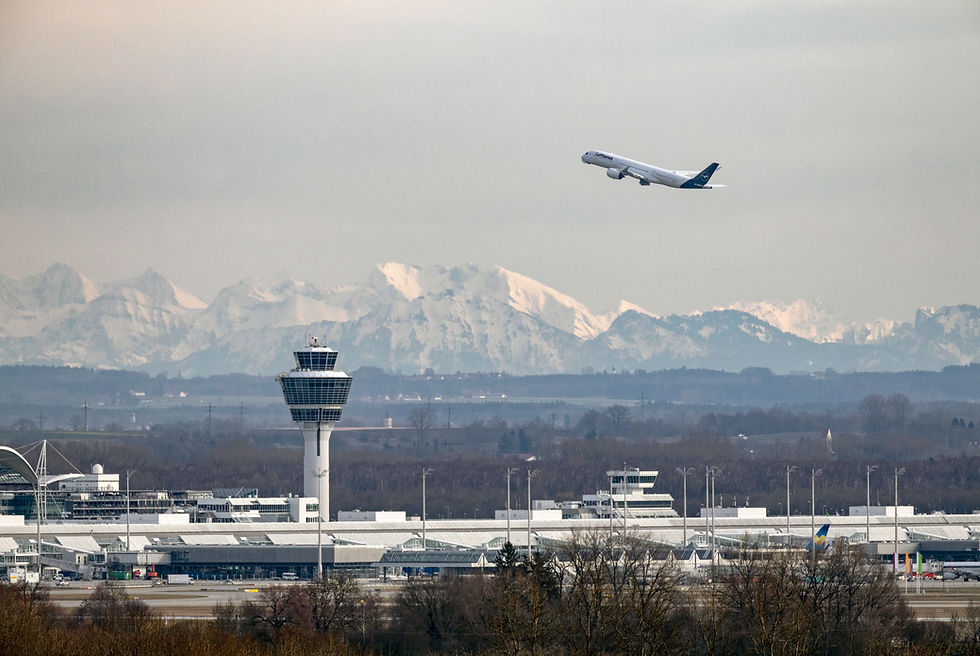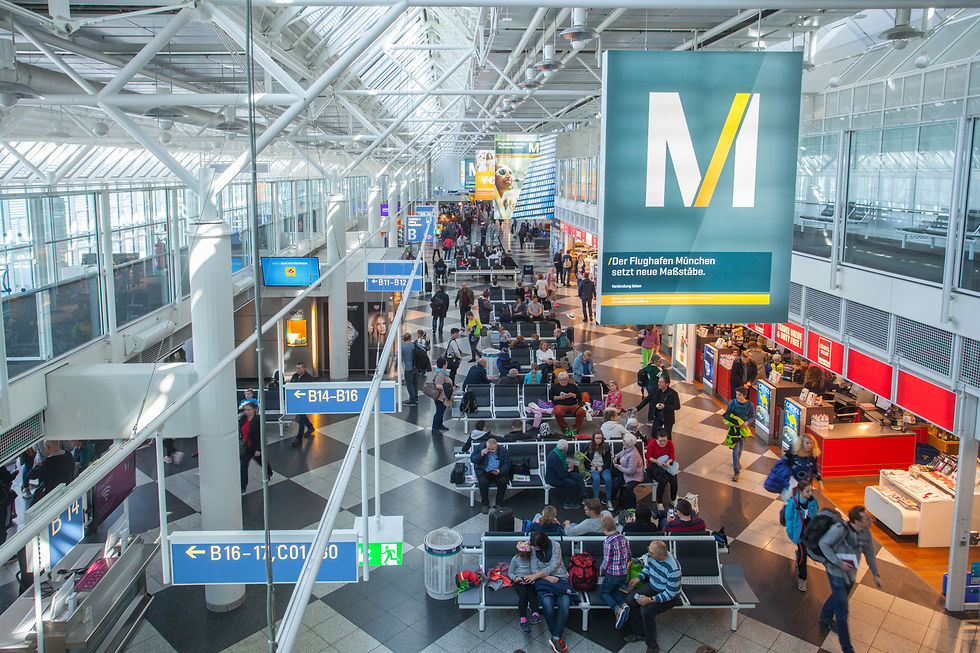Case Study
Public Address Revamp at Munich Airport T1: Complete Renewal and Introduction of Automatic Boarding Announcements
The existing public address system was outdated and in need of a major overhaul. Sittig and Bosch delivered a state-of-the-art system that will greatly improve the travel experience for passengers at Munich Airport Terminal 1.

© copyright Munich Airport
© copyright Munich Airport
PAXGuide & PAXModular
Solution
Airport
Vertical
2023
Launch
About the Customer
Munich Airport is Germany’s second busiest airport and one of Europe’s major aviation hubs, known for its efficiency, passenger experience, and commitment to innovation. Serving tens of millions of travelers annually, the airport operates as a key connector between global destinations and plays a critical role in both international air travel and regional economic development.

The Challenge
-
Replacement of the existing, outdated public address system with a new, modern system while the terminal remained fully operational.
-
Reuse of the existing loudspeakers and cabling infrastructure to reduce project costs and timeframe.
-
Interconnection of the new PA-system with the airports other PA-systems in Terminal 1, 2, Satellite Terminal and outbuildings.
-
Replacement of over 80 gate paging-stations in Terminal 1 to enhance the speech intelligibility significantly.
-
Introduction of automatic announcements to optimize passenger flow and reduce the workload of handling agents
Solution
Munich Airport has been working successfully with Sittig Technologies from Frankfurt, Germany for more than 20 years. For this challenging project, the airport also chose a team consisting of its long-time partners Sittig Technologies and Bosch. With their experience and expertise, they were able to provide a solution that has helped the airport improve its operations and efficiency.
Replacement of the existing PA-system
For the migration phase, Sittig, Bosch and the Munich Airport team developed a concept which made it possible to set up the new PRAESENSA system in parallel and to supply it with the paging signals of the existing system. Thus, during the approximately 1-year migration phase, each paging line could be switched over to the new system during ongoing operation without any disruptions to the operational process. Via approximately 100 analog audio inputs and 140 input contacts, the audio and control signals of the existing paging stations were tapped in parallel, transmitted to Sittigs PAXGuide system and routed to the new PRAESENSA PA system from Bosch.
Replacement of over 80 paging stations
All gate and operational paging stations (approx. 87) in Terminal 1 were replaced by Sittigs PAXmodular IP Paging stations, which were directly connected to the airport network. The paging stations communicate directly with the redundant PAXGuide station server, which handles the audio transfer and routing to the new PA system. The total latency of the entire audio path during live speech is less than <20ms and includes the entire chain from PA station -> airport network + firewalls and routers - >PAXGuideServer -> Bosch PRAESENSA PA system -> loudspeaker. After all PA-control rooms had been replaced, the changeover to the new IP paging stations followed. Since these were already preconfigured and the housings were custom-made, the primary exchange could be implemented in approximately 3 working days and during normal terminal operation.
Interconnection with the airports other PA-systems
The new PRAESENSA PA system at Terminal 1 was integrated with the airport's existing PAXGuide system. The existing PAXGuide management system from Sittig has graphical paging stations for the terminal supervisors, the fire department, and an interface to the fire department's operations control system. The PAXGuide management system's paging stations can be used to address every speaker line in all airport terminals (Terminal 1, Terminal 2, Satellite terminal and outbuildings), regardless of which public address system has been installed in each area of the airport. This enables the airport to centrally manage all announcements across the entire facility from a single location.
Rollout automatic announcement system
As part of the replacement of the PA control centers, the automatic gate announcement module (PAXgate) of the PAXGuide system has also been rolled out. With the help of the DGA, boarding announcements are now made automatically in 18 languages. Thanks to a new connection to the airport's passenger information system, all flight data is transmitted to the PAXGuide system in real time. This means that ground staff can also start the required announcements on the existing gate PCs. The boarding announcements include all boarding specifics of the using airlines (such as row, group or zone boarding). Furthermore, various types of announcements are available for bridge and bus boarding, as well as special announcements for delays, gate changes or baggage information, etc.
“In the end, it was not noticeable to our passengers and visitors at the airport, but a special challenge for the successful generation change was the coupling between the old and the new system. The system, which was tailored precisely for this purpose, provided us with absolutely reliable support throughout the entire changeover process and laid the foundation for a smooth operation. Clearly audible to our passengers at Munich Airport, however, is the new automatic gate announcement system, which supports the boarding process - specially adapted to the requirements in Terminal 1 - with automated announcements in 18 languages and was very quickly and gladly accepted by the check-in staff as a work relief. The introduction also went very smoothly and virtually in the background to the renewal of the central technology of the loudspeaker system.
Many thanks to the company Sittig for the good cooperation and the professional implementation of all tasks in this project!“

Michael Huck
Project Engineer Safety Systems – Fire Detection and Voice Alarm Systems
Munich Airport
Benefits
The new system provides many benefits for the airport, passengers, and personnel. With overall control from a central location, the airport can make sure that all announcements are made in a timely and uniform manner. This relieves gate personnel from having to make boarding announcements themselves, freeing them up to focus on other tasks. The multilingual nature of the announcements also improves passenger flow by making it easier for travelers to understand what is happening around them.
Finally, the high audio quality of the paging stations ensures that all manual announcements are clear and easy to understand.
The most important benefit for the customer was the ability to keep the terminal fully usable during the migration phase. By establishing the integrated approach, Sittig and Bosch made it possible that the system replacement proceeded seamlessly. Individual loudspeaker lines were therefore gradually changed over without affecting operations.

© copyright Munich Airport

